
- Home
- Photography Tours
- Diary / Blog
- Galleries
- Foreign Trips
- Tasmania 2016
- NE Queensland 2016
- Western Alps 2016
- NE Spain 2016
- Australia's Wet Tropics 2015
- Australia's Top End 2015
- SW Australia 2015
- Switzerland 2015
- Andalucia 2015
- Belize 2015
- Australia 2014
- Switzerland 2014
- Belize 2014
- Bahama Islands 2014
- Switzerland 2013
- Ecuador 2012-2013
- Florida 2011-2012
- Vancouver Island 2011
- Australia 2010
- Peru 2008
- Bulgaria 2007
- Lesvos 2006
- California 2006
- New Zealand 2005
- Extremadura 2005
- Goa, India 2004
- The Gambia 2003
- About
November 2014
6th - 7th November 2014
Shark Bay, Western Australia
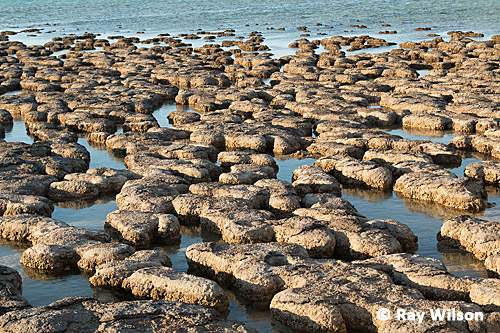
Stromatolites
It is a strange thing to capture the imagination of a small child as, let's face it, they are not the most dynamic of the world's natural wonders, but ever since seeing David Attenborough's Life on Earth when it was first broadcast in the late 70's I have always wanted to see the Stromatolites at Shark Bay. The rock pillars you can see in the photos have been deposited over thousands of years from the cell walls of dead cyanobacteria and other microbes living on the top surface of the rock. These cyanobacteria extremophiles are relicts of what early life on Earth probably looked like over 3 billion years ago.
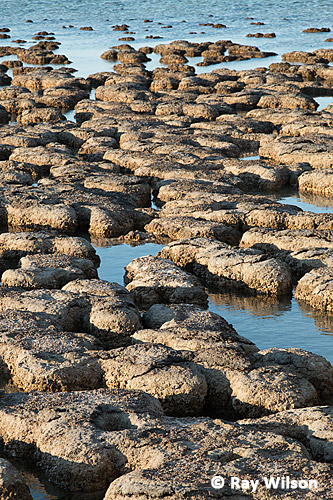
Stromatolites
Nowadays, Stromatalites only grow in extreme environments were competition from other "more evolved" species is non-existant. At Hamelin Pool, for example, the salt content of the water is over two times that found in the open ocean due to the tidal flow being severely restricted and the trapped salty water being concentrated by evaporation from the extreme temperatures that plague the area. If the high salinity is not enough of a hardship, the microbial mats also have to contend with the difficulties of living in a tidal environment and extreme temperatures.
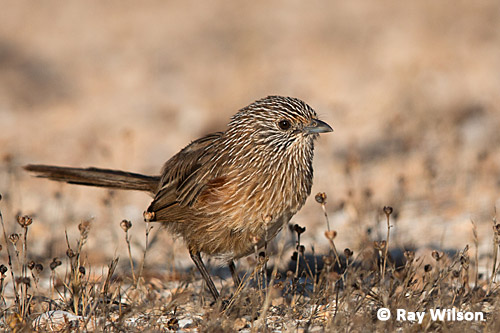
Western Grasswren (Amytornis textilis textilis)
Western Grasswren has recently been split from Thick-billed Grasswren and its main population is centred around Shark Bay. Like all grasswrens they are a secretive species but can occasionally be seen hopping around on the ground between bushes as they forage for seeds in their family parties.
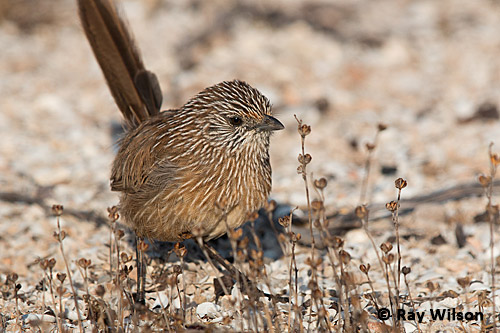
Western Grasswren (Amytornis textilis textilis)
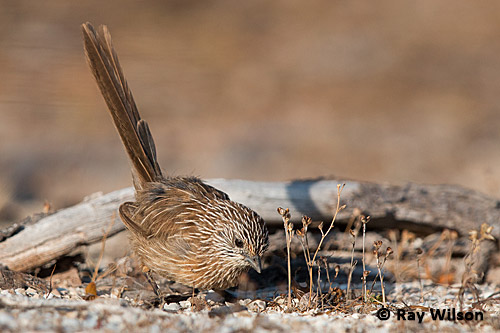
Western Grasswren (Amytornis textilis textilis)
Another species that travels in close-knit family groups is the White-browed Babbler. They can be found in dry woodland and scrub throughout most of the southern half of Australia, but are generally quite uncommon.
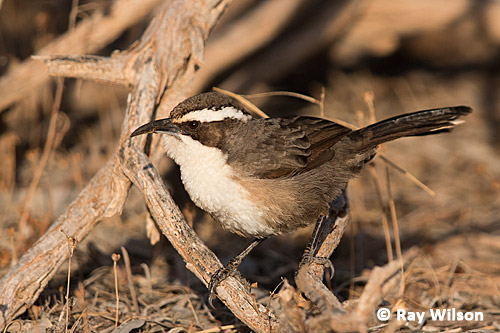
White-browed Babbler (Pomatostomus superciliosus)
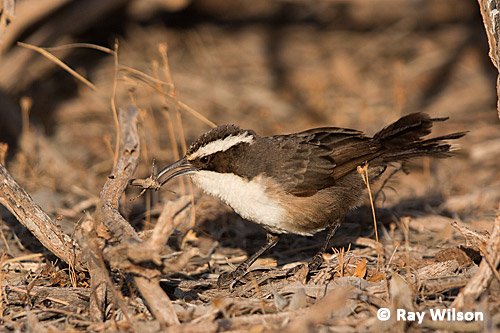
White-browed Babbler (Pomatostomus superciliosus)
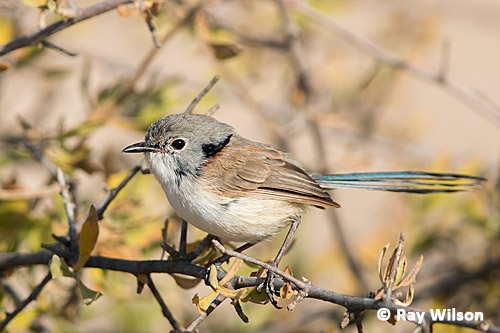
eclipse male Variegated Fairywren (Malurus lamberti assimilis)
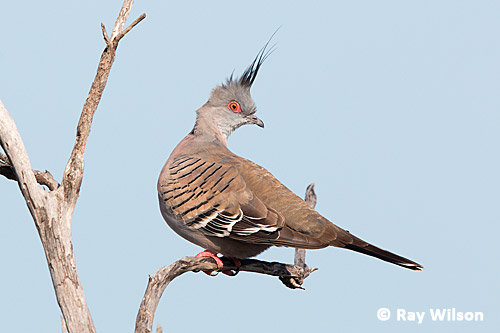
Crested Pigeon (Ocyphaps lophotes)
It pays to keep your eyes open when driving...well, come to think of it, that is always good advice if you want to stay alive! What I actually meant is that it pays to keep your eyes open for wildlife bordering the roadside and not just because they may pose a traffic hazzard. Travelling the vast distances between places of interest in Australia provides ample opportunities to spot some of the larger sparsely distributed desert-loving species, such as the Perentie I came across about 50km north of Hamelin.
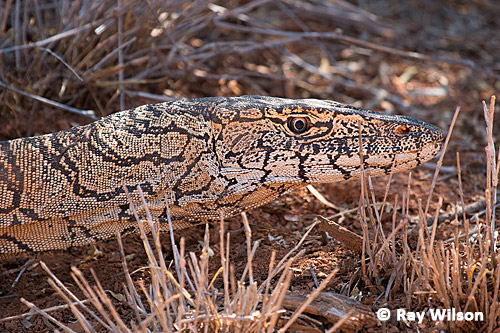
Perentie (Varanus giganteus)
Growning up to 2.4m (8ft) in length, the Perentie is the second largest lizard in the world and can be found in arid regions throughout the central belt of Australia.
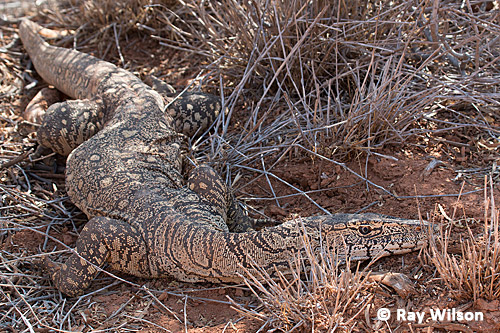
Perentie (Varanus giganteus)
| 5th-6th November (The Pinnacles, WA, Australia) | 2014 index | 7th-9th November (Carnarvon, WA, Australia) |
Ray Wilson owns the copyright of all images on this site.
They may not be used or copied in any form without prior written permission.
raywilsonphotography@googlemail.com